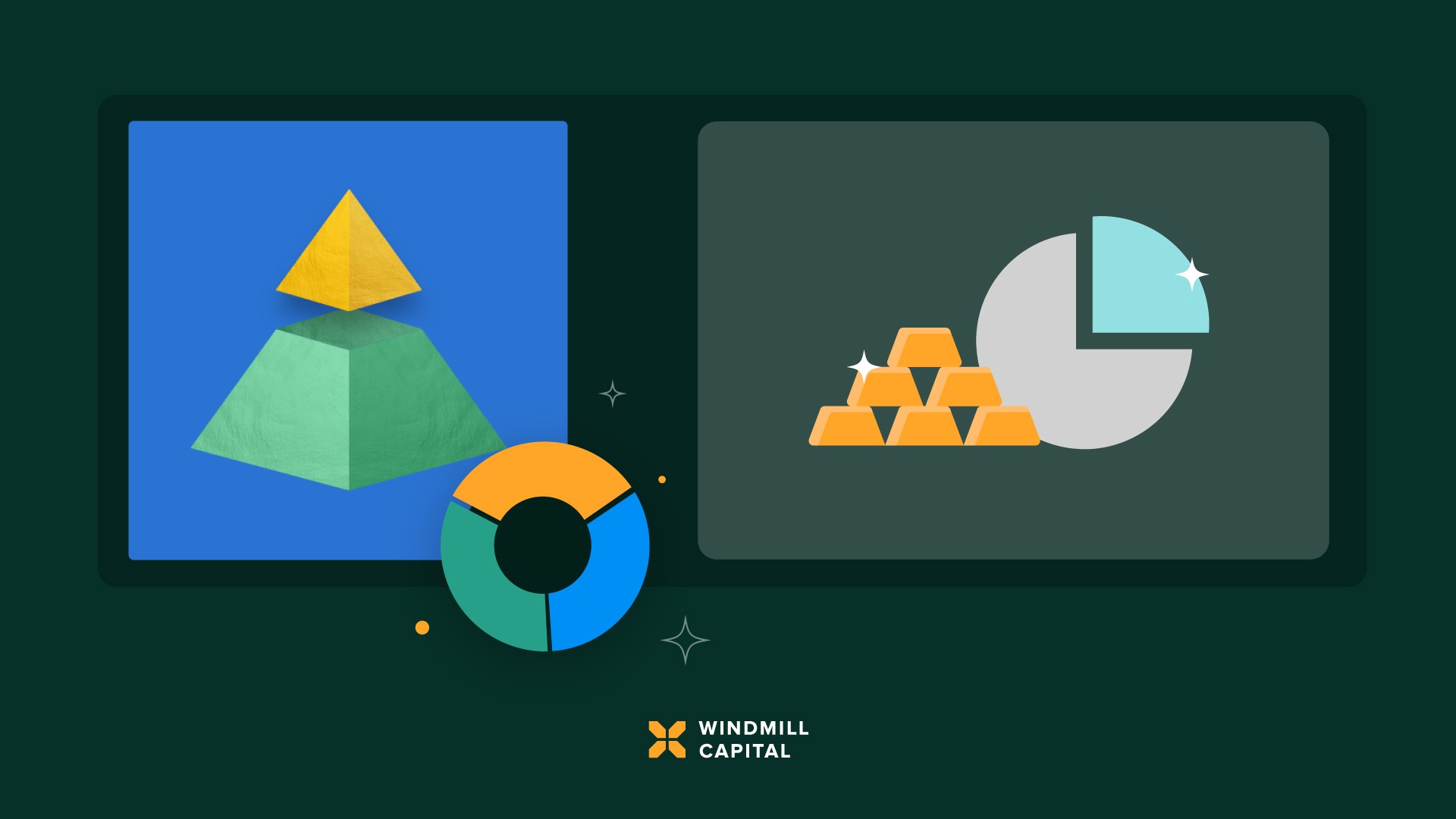Equity & Gold

Exchange Traded Funds (ETFs) as a concept has gained a lot of ground in the Indian markets over the past couple of years. The advanced infrastructure of ETF based investing in the Western markets have nudged our market participants to adopt it too.
For the uninitiated, ETFs are financial instruments (read: basket) that track a particular index, commodity, or a group of stocks. It trades on the exchange – just like stocks. For example, the Nifty Index consists of 50 stocks. So if one wants to invest in the Nifty index, one can just buy the Nifty ETF, instead of buying all the 50 stocks in the same proportion as the Index. If the Nifty generates a return of 5%, the Nifty ETF will also generate approximately the same returns. Similarly, investing in a gold ETF will allow investors to earn the returns of investing in physical gold. As logic would guide, the price movement of a concerned ETF would be similar to the price movements of the underlying security or group of securities.
Now, there are multiple reasons attached to the traction in the ETF space, let me outline a few here –
- Low cost investing – ETF instruments are passively managed vehicles, as they follow a certain index or theme, and hence the need to take calls on selective companies does not arise. Because of this passive nature of maintenance, they do not warrant frequent churn (churn refers to change in the portfolio of stocks due to frequent buying and selling) and thereby cut down on the transaction costs, which in turn makes them less expensive and low cost instrument as compared to an actively managed mutual fund or an actively managed portfolio of stocks. For example, if we have exposure towards 5 different stocks, specific calls need to be made on individual businesses. This cost efficiency on account of lower expense ratio helps ETFs take the title of low cost investment products.
- Diversification & risk element – The structure of the product is such that it offers rich diversification within the same asset class. This diversification primarily comes from a sectoral point of view, where stocks belonging to varied industries are pooled into a single ETF. We shall talk about this in greater detail, going forward, with a specific case in point. As a result, ETFs have a lower risk-element attached to it as the risk-reward is highly favourable for any investor. The reason being that with a modest capital disbursement one gets exposed to a variety of quality stocks, thereby mitigating a good portion of stock-specific risk. For instance, a Nifty 50 ETF, will allow you to take exposure to a wide variety of industries, without running the risk of a single stock exposure.
- Investing made easy – ETFs enable you to get exposure to a wide variety of asset classes and themes which would not have been possible otherwise. For example, the easiest way to invest in commodities like silver and gold is to buy their ETFs. For that matter, if you want to invest in US stocks, you can either opt for the cumbersome process of opening an account with a foreign broker and pay hefty commissions or simply buy an international ETF in India that holds US stocks. This illustrates the use case of ETFs, as an investment product, in making the life of an investor easy.
At Windmill Capital, we have a dedicated focus towards building an ETF based smallcase, i.e. a portfolio that hold ETFs of different varieties. The reckoning within the team is that ETF based smallcases are a fairly prudent way to build your core portfolio.
So, how do we go about building such smallcases? We follow a set process for the same. To begin with, the smallcase idea is seen from a bird’s eye view to check for what it offers and how different investors can benefit from it. Then, we make a roster of the most liquid ETF instruments in the market, representing the relevant asset classes that we wish to include in our smallcase universe. Next up, we backtest the smallcase to gauge its performance in various market scenarios including extreme bear/bull market to a prolonged sideways market (sideways markets refer to when prices remain almost constant over time). This helps us deploy smart weighting schemes. Essentially, the stress-testing lays out different performance scenarios in front of the team and that aids decision-making as far as weight allocation is concerned. And finally, we take a final call on whether the ETF smallcase is good to launched for investors, keeping the first step closely in mind.
The following page would see detailing of the Equity & Gold smallcase, starting from how it was conceived to investor suitability –
Detailing of the smallcase
The Equity & Gold smallcase is a hybrid hedge portfolio that houses 2 ETFs of different asset classes. The smallcase has a fixed weight allocation with 70% equity and 30% gold. It currently holds Nippon India Nifty 50 Bees ETF for the equity portion and Nippon India Gold Bees ETF for gold.
The use-case or the need of the product was a fairly straight-forward one and that is the inverse correlation between equity and gold. Empirical data suggests that gold, being a safe-haven asset class, does well in times of market turmoil – which is also when equity markets are underperforming – and thus they generally are seen to move in opposite directions. This is why gold has proved to be an effective hedge to equity markets. Hedge is essentially a risk management strategy wherein two positions are taken such that they are expected to move in opposite directions, hence neutralizing the effect of any downside extremity. This helps to navigate market concentration.
The next use-case is from an inflationary perspective. Gold acts as an efficient fighting tool when it comes to inflationary pressures and tends to beat inflation to deliver positive real returns. For instance, if one is exposed to both equity and gold, underperformance in equity markets will get balanced out with gold, as they have historically moved in opposite directions. Hence, we believe that a mix of these two asset classes is a must for sustainable wealth creation. It is an efficient way to achieve capital protection, which each investor needs to be mindful of.
Even from an individualistic point of view, taking exposure to equity and gold commands merit and is a prudent way of investing into the capital markets. A higher weightage (70%) is maintained given to equity as it helps in growing and generating wealth over the long haul, with a lower blended risk due to the presence of gold (30%), which protects the overall portfolio from large drawdowns.
The Research team reviews this smallcase on a quarterly basis and manages the weight allocation between the instruments. As mentioned previously, since the smallcase is a fixed-weighted one, the rebalancing is focused on the weights every quarter based on the set condition. You would be thinking as to why does the smallcase need rebalancing if it’s a fixed-weighted one, right? That is because the allocation of the basket changes as per market price movement. Meaning, if you had put 70 bucks in the equity component at ₹100 and three months down the line, the equity component becomes ₹150 your allocation has got skewed due to price appreciation.
The smallcase is categorized as Low Volatility. Hence, investors having any degree of risk appetite can consider investing in this smallcase. Equity & Gold smallcase can prove to be a smart route to build your core portfolio. It neutralizes, to a large extent, the risk of market cycles given the combination of the two said instruments. Also, it is prudent to note that this portfolio should be looked at as a tool of long-term wealth creation.
End Note
As market participants, we have a tendency to reject things that seem to be extremely simplistic in nature. We like to hold on to our illusion of power, where carrying out something complicated feels fruitful. However, at Windmill Capital, the idea within the team is to always keep things straight forward and effective. The above explanation is a testimony of the simplicity with which we have ideated on all our ETF based smallcases and how we manage them. We shall continue to look for opportunities to broaden our offering universe. ETFs are a smart way to take market exposure and combining the right instruments could yield healthy returns. We firmly believe that this simple concept is a powerful tool to create wealth over the long-term.
Follow us on Twitter @windmillcapHQ for updates on our latest and existing offerings and interesting market insights. Also, feel free to let us know what else you wish to read!
Disclaimer: The content in these posts/articles is for informational and educational purposes only and should not be construed as professional financial advice and nor to be construed as an offer to buy/sell or the solicitation of an offer to buy/sell any security or financial products. Users must make their own investment decisions based on their specific investment objective and financial position and use such independent advisors as they believe necessary. Refer to our disclosures page, here.





